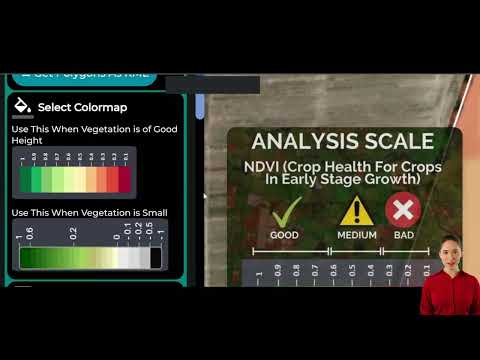Maximizing Farm Worker Retention: The Ultimate Guide to Employee Benefits in Canadian Agriculture

“Canadian farms offering comprehensive benefits packages see up to 30% higher worker retention rates.”
In the ever-evolving landscape of Canadian agriculture, we find ourselves at a crossroads where the success of our farms hinges not just on crop yields, but on the wellbeing and satisfaction of our workforce. As farm owners and managers, we’re faced with the challenge of attracting and retaining skilled agricultural workers in an increasingly competitive labor market. The solution? A robust and thoughtful approach to farm employee benefits.
In this comprehensive guide, we’ll explore the intricacies of crafting effective benefit packages for agricultural workers, delving into strategies that address the unique needs of both domestic and foreign farm workers. From health insurance to innovative non-monetary perks, we’ll uncover how these benefits can transform your farm’s ability to recruit and retain top talent.
The Importance of Farm Employee Benefits in Canadian Agriculture
Before we dive into the specifics, let’s understand why employee benefits are crucial in the agricultural sector:
- Labor Shortage Mitigation: With an aging workforce and increasing urbanization, farms face significant labor shortages. Attractive benefits can draw more workers to agricultural careers.
- Increased Productivity: Workers who feel valued and secure are more likely to be productive and committed to their jobs.
- Compliance with Regulations: Proper benefit packages ensure compliance with labor laws and regulations, particularly for foreign workers.
- Competitive Edge: In a sector where skilled labor is at a premium, comprehensive benefits can set your farm apart as an employer of choice.
Essential Components of Farm Worker Benefits
Let’s break down the key elements that should be considered when crafting a benefits package for agricultural workers:
1. Health Insurance and Healthcare Coverage
Health insurance is a cornerstone of any robust benefits package. For farm workers, who often engage in physically demanding tasks, access to quality healthcare is paramount.
- Provincial Health Plans: Ensure all eligible employees are enrolled in the appropriate provincial health plan. This forms the foundation of their healthcare coverage.
- Supplemental Health Insurance: Consider offering additional coverage for services not included in provincial plans, such as dental care, vision care, and prescription medications.
- Mental Health Support: Include access to mental health services, which can be crucial for workers dealing with the stresses of agricultural work.
Pro Tip: Partner with insurance providers that understand the unique needs of agricultural workers. Some companies offer specialized plans for the farming sector.
2. Retirement and Savings Plans
While immediate benefits are important, long-term financial security can be a significant factor in employee retention.
- Registered Retirement Savings Plans (RRSPs): Offer matching contributions to encourage workers to save for retirement.
- Tax-Free Savings Accounts (TFSAs): Provide information and support for workers to utilize TFSAs for additional savings.
- Financial Education: Offer workshops or resources to help employees understand and plan for their financial future.
3. Housing and Accommodation
For many farm workers, especially seasonal and foreign workers, housing is a critical concern.
- On-site Housing: If possible, provide clean, comfortable, and safe housing options on or near the farm.
- Housing Allowances: For workers who prefer to arrange their own accommodation, consider offering a housing allowance.
- Assistance with Utilities: Include coverage for basic utilities to ease the financial burden on workers.
4. Work-Life Balance Initiatives
Agricultural work often involves long hours and can be physically demanding. Implementing work-life balance initiatives can significantly improve job satisfaction and retention.
- Flexible Scheduling: Where possible, offer flexible work hours or compressed workweeks.
- Paid Time Off: Provide generous vacation time and personal days.
- Family-Friendly Policies: Consider offering parental leave, childcare assistance, or family health benefits.
“Implementing wellness programs can increase farm worker productivity by 15-20% annually.”
5. Career Development and Training
Investing in your workers’ skills not only benefits your farm but also shows a commitment to their personal growth.
- Skills Training: Offer regular training sessions on new agricultural technologies and techniques.
- Language Classes: For foreign workers, provide language classes to improve communication and integration.
- Leadership Development: Create pathways for workers to advance into supervisory or management roles.

Navigating Healthcare Complexities for Agricultural Workers
Healthcare coverage in the agricultural sector can be particularly complex, especially when dealing with a mix of domestic and foreign workers. Here’s how to navigate these challenges:
Understanding Provincial Health Plans
Each Canadian province has its own health insurance plan, and eligibility can vary. It’s crucial to understand the specifics of your province’s plan and how it applies to different types of workers.
- Waiting Periods: Be aware of any waiting periods for new residents or seasonal workers.
- Coverage Limits: Know what services are covered and what additional insurance might be necessary.
- Registration Process: Assist workers in navigating the registration process for provincial health plans.
Duty of Care for Foreign Farm Workers
When employing foreign workers, farms have a special duty of care to ensure their health and safety.
- Mandatory Health Insurance: Ensure that all foreign workers have the required health insurance coverage from day one of their employment.
- Cultural Sensitivity: Provide healthcare information in multiple languages and consider cultural differences in healthcare practices.
- Access to Medical Care: Establish relationships with local healthcare providers who can offer services to foreign workers.
Managing Financial Risks
Providing comprehensive healthcare coverage can be a significant financial investment. Here are strategies to manage these costs:
- Group Insurance Plans: Leverage group rates to reduce overall insurance costs.
- Health Spending Accounts (HSAs): Offer HSAs as a flexible way to provide additional healthcare coverage while controlling costs.
- Preventive Care Programs: Implement wellness initiatives to reduce the likelihood of major health issues and associated costs.
Innovative Solution: Consider partnering with telemedicine providers to offer remote healthcare consultations, especially beneficial for farms in rural areas.
Non-Monetary Benefits in Agriculture
While financial compensation and healthcare are crucial, non-monetary benefits can significantly enhance job satisfaction and retention. Here are some innovative ideas:
- Farm-to-Table Programs: Offer workers fresh produce from the farm, fostering a sense of connection to their work.
- Community Building Events: Organize regular social events or team-building activities to create a sense of belonging.
- Educational Opportunities: Sponsor workers to attend agricultural conferences or workshops.
- Transportation Assistance: Provide shuttle services or transportation allowances, especially for remote farms.
- Recognition Programs: Implement employee recognition initiatives to acknowledge outstanding contributions.
Tailoring Benefits for Seasonal Farm Worker Retention
Seasonal workers present unique challenges in terms of benefits and retention. Here’s how to create attractive packages for this crucial workforce:
- Pro-rated Benefits: Offer benefits that are proportional to the duration of employment.
- Return Bonuses: Implement bonuses for seasonal workers who return year after year.
- Off-Season Support: Provide resources or connections for off-season employment opportunities.
- Skills Development: Offer training during the off-season to enhance workers’ skills and employability.
Leveraging Technology in Farm Worker Benefits
In today’s digital age, technology can play a significant role in enhancing and managing employee benefits. Here’s how farms can leverage tech solutions:
- Benefits Management Platforms: Utilize digital platforms for easy enrollment and management of benefits.
- Mobile Apps: Provide access to benefits information and resources through mobile applications.
- Wearable Technology: Implement wearable devices for health monitoring and promoting wellness initiatives.
Farmonaut’s Contribution: While Farmonaut primarily focuses on satellite-based farm management solutions, its technologies can indirectly contribute to employee benefits. For instance, by optimizing farm operations and increasing productivity, farms may have more resources to allocate towards comprehensive benefit packages. Additionally, Farmonaut’s tools can help in efficient resource management, potentially leading to better working conditions for farm employees.
Explore Farmonaut’s solutions:
Creating Competitive Employment Packages
To attract and retain top talent in the agricultural sector, it’s essential to create competitive employment packages that stand out. Here’s how:
- Benchmark Against Industry Standards: Regularly research and compare your benefits offerings with other farms and industries.
- Customizable Packages: Offer flexible benefit options that allow workers to choose what’s most valuable to them.
- Total Compensation Statements: Provide clear, comprehensive statements that show the full value of the benefits package.
- Regular Reviews and Updates: Continuously assess and update your benefits package to ensure it remains competitive and relevant.
Educating Employees About Their Benefits
Having a great benefits package is only half the battle; ensuring employees understand and utilize their benefits is equally important:
- Comprehensive Onboarding: Include detailed benefits explanation in the onboarding process for new employees.
- Regular Information Sessions: Host periodic meetings or workshops to review benefits and answer questions.
- Multi-lingual Resources: Provide benefits information in multiple languages to cater to diverse workforces.
- Digital Resources: Create an easily accessible online portal or app for benefits information and management.
Legal Considerations and Compliance
Navigating the legal landscape of employee benefits in agriculture is crucial for avoiding potential issues:
- Stay Informed on Labor Laws: Regularly review and update policies to comply with changing labor regulations.
- Equal Treatment: Ensure that benefit offerings do not discriminate against any group of workers.
- Documentation: Maintain clear records of all benefits offered and employee enrollments.
- Professional Consultation: Consider working with legal experts specializing in agricultural employment law.
Measuring the Impact of Employee Benefits
To ensure your benefits strategy is effective, it’s important to measure its impact:
- Employee Surveys: Conduct regular surveys to gauge satisfaction with benefits offerings.
- Retention Rates: Monitor changes in employee retention rates as you implement or modify benefits.
- Productivity Metrics: Track productivity levels in relation to benefits improvements.
- Cost-Benefit Analysis: Regularly assess the financial impact of your benefits program against its benefits.
Case Study: Innovative Benefits in Action
Let’s look at a hypothetical case study to illustrate the impact of a well-designed benefits package:
Green Meadows Farm, a mid-sized operation in Ontario, was struggling with high turnover rates among its seasonal workers. They implemented a comprehensive benefits strategy that included:
- A points-based system where workers could choose their benefits
- On-site health clinics during peak seasons
- A mentorship program pairing experienced workers with newcomers
- End-of-season bonuses tied to farm productivity
The result? A 40% increase in return rates for seasonal workers and a 25% boost in overall productivity within two years.
The Future of Farm Worker Benefits
As we look to the future, several trends are likely to shape farm worker benefits:
- Increased Focus on Mental Health: Expect to see more emphasis on mental health support and stress management programs.
- Tech-Driven Personalization: AI and data analytics will enable more personalized benefits packages.
- Sustainability-Linked Benefits: Benefits may increasingly be tied to sustainable farming practices and environmental stewardship.
- Global Workforce Considerations: As farms continue to rely on international workers, benefits will need to accommodate diverse cultural needs and expectations.
Comparison of Farm Employee Benefits
| Benefit Type | Small Family Farms | Mid-Size Operations | Large Agricultural Enterprises | Estimated Impact on Retention |
|---|---|---|---|---|
| Health Insurance | Basic provincial coverage | Provincial + supplemental health plans | Comprehensive health, dental, and vision | High |
| Retirement Plans | Limited or none | RRSP matching up to 3% | RRSP matching up to 5%, pension plans | Medium |
| Housing | Basic on-site housing | Improved on-site or housing allowance | Choice of quality housing or substantial allowance | High |
| Work-Life Balance | Flexible hours during off-peak | Paid time off, family leave | Extended paid leave, wellness programs | Medium |
| Career Development | On-the-job training | Skill development programs | Extensive training, leadership programs | Medium to High |
| Industry Average | Basic benefits package | Moderate comprehensive package | Extensive benefits and perks | – |
Conclusion: Cultivating Success Through Employee Care
In the competitive landscape of Canadian agriculture, a well-crafted employee benefits package is no longer a luxury—it’s a necessity. By prioritizing the health, wellbeing, and job satisfaction of our farm workers, we not only address immediate labor shortage challenges but also lay the groundwork for long-term success and sustainability in our agricultural enterprises.
Remember, the most effective benefits strategies are those that are continuously evolving. Stay attuned to the needs of your workforce, keep abreast of industry trends, and don’t hesitate to innovate. By doing so, you’ll not only retain valuable workers but also position your farm as an employer of choice in the agricultural sector.
As we move forward, let’s commit to nurturing not just our crops, but also the people who are the backbone of our farms. After all, a thriving workforce is the key to a bountiful harvest, year after year.
FAQs
- Q: Are farm owners legally required to provide benefits to their workers?
A: Legal requirements vary, but generally, farms must provide certain basic benefits like workers’ compensation. Additional benefits often depend on factors like farm size and worker status (e.g., seasonal vs. full-time). - Q: How can small farms compete with larger operations in terms of benefits?
A: Small farms can focus on non-monetary benefits, flexible work arrangements, and creating a strong community atmosphere. They can also explore group insurance options with other small farms. - Q: What are some cost-effective benefits that can make a big impact?
A: Flexible scheduling, professional development opportunities, and farm-to-table programs can be highly valued by employees without significant financial investment. - Q: How often should farm owners review and update their benefits packages?
A: It’s recommended to review benefits annually, considering changes in labor laws, market conditions, and employee feedback. - Q: Can offering better benefits really improve farm productivity?
A: Yes, comprehensive benefits can lead to improved morale, reduced turnover, and increased productivity. Happy, healthy workers are often more engaged and efficient.
For more information on how technology can support your farm management and potentially contribute to better working conditions, explore Farmonaut’s solutions:
API Access: https://sat.farmonaut.com/api
API Developer Docs: https://farmonaut.com/farmonaut-satellite-weather-api-developer-docs/




















